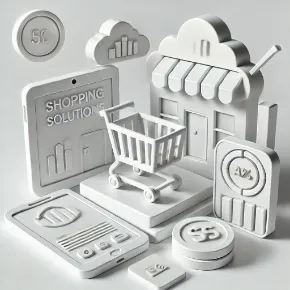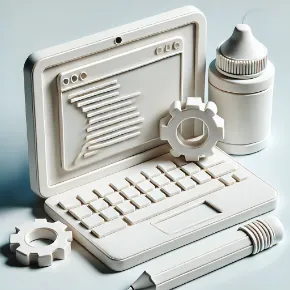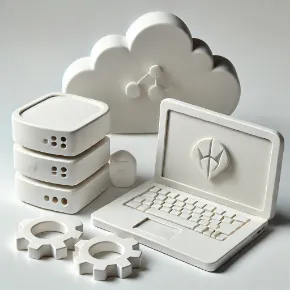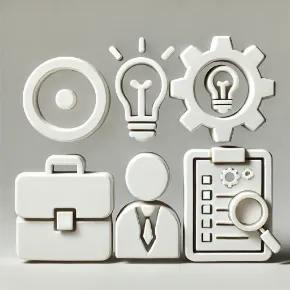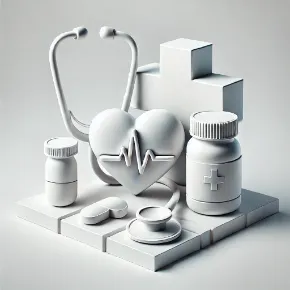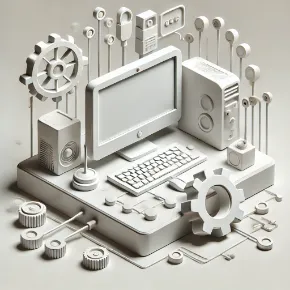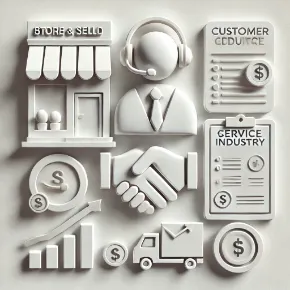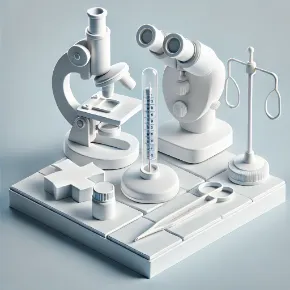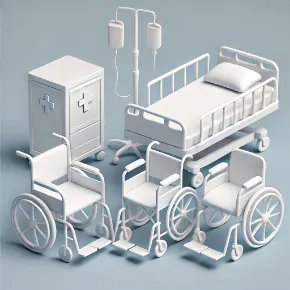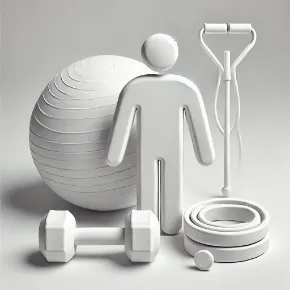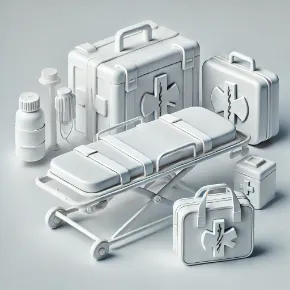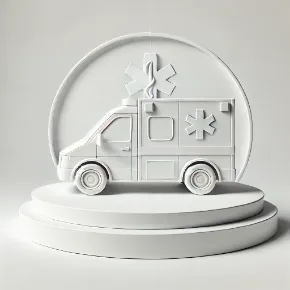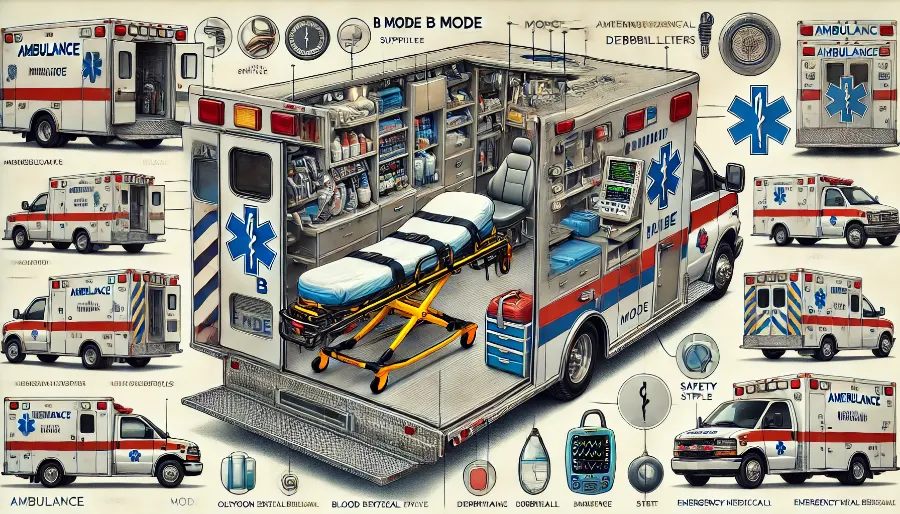
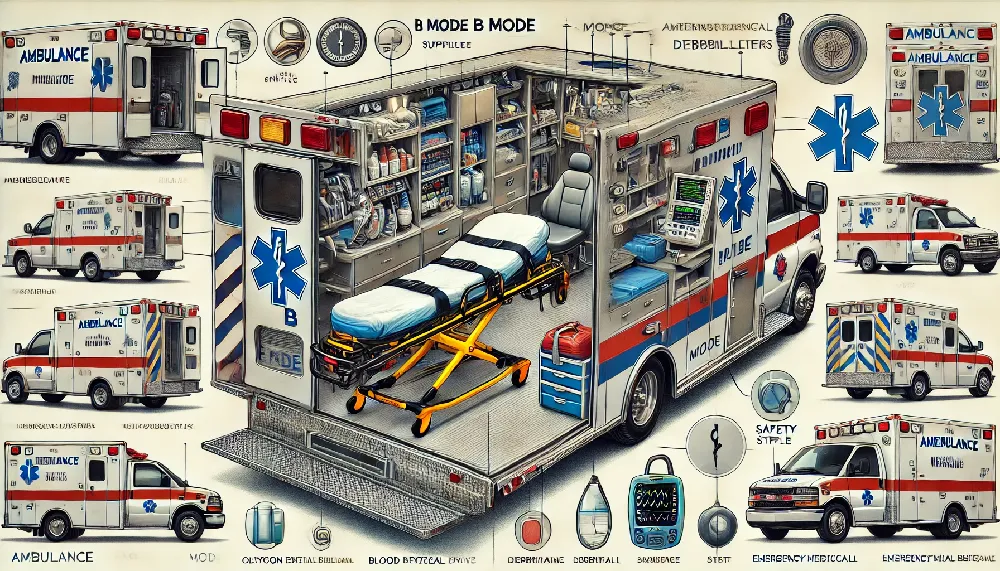
Authored by Dr. Pooyan Ghamari, PhD
Ambulance B Mode, commonly known as Basic Life Support (BLS) Ambulance, is a cornerstone in the field of emergency medical services (EMS). These ambulances are crucial for providing essential care and transportation for patients who do not require advanced medical interventions. This comprehensive guide covers the features, typical uses, advantages, limitations, and guidelines for the effective use of BLS ambulances.
Key Features of Ambulance B Mode
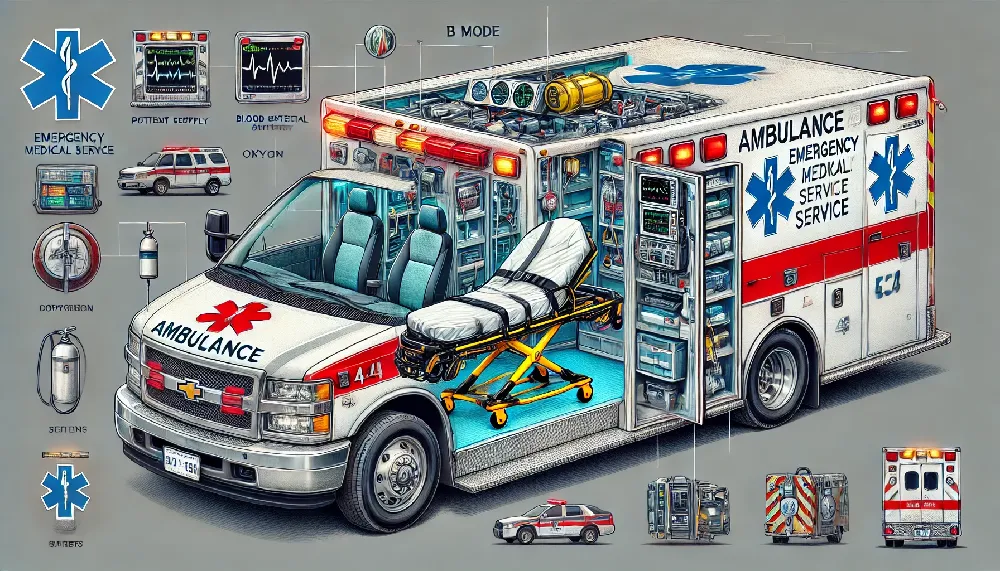
- Essential Medical Equipment:
- Oxygen Systems: Critical for patients needing supplemental oxygen.
- First Aid Kits: Includes bandages, splints, antiseptics, and other essential medical supplies.
- Automated External Defibrillator (AED): Necessary for immediate response to cardiac emergencies.
- Monitoring Tools: Basic instruments such as blood pressure cuffs and stethoscopes to monitor vital signs.
- Patient Transport Capabilities:
- Stretcher: Provides safe and comfortable patient transport.
- Space for EMTs: Ample room for the patient and at least one Emergency Medical Technician (EMT).
- Safety Belts: Ensure the patient is secure during transit.
- Attendant Seating: Accommodates one or more attendants to accompany the patient.
- Communication Systems:
- Radio Communication: Facilitates coordination with hospitals and emergency dispatch centers, ensuring efficient response and preparedness.
- Safety and Comfort Features:
- Climate Control: Maintains a comfortable environment for the patient.
- Lighting and Storage: Adequate lighting and storage compartments for medical supplies and equipment.
Common Applications of BLS Ambulances
- Non-Emergency Transfers: Moving patients between hospitals, nursing homes, and homes when there is no immediate threat to life.
- Emergency Situations: Transporting patients with conditions such as fractures, minor burns, or mild respiratory issues.
- Event Medical Support: Providing standby medical support at public events, sports matches, and other gatherings.
Training for EMTs on BLS Ambulances
EMTs on BLS ambulances receive training in the following areas:
- CPR (Cardiopulmonary Resuscitation): To revive patients in cardiac arrest.
- Airway Management: Ensuring patients maintain an open airway.
- Wound and Fracture Care: Treating and stabilizing injuries.
- Patient Assessment: Monitoring vital signs and evaluating patient conditions.
- Safe Transport Practices: Ensuring safe and secure patient transport.
Benefits of BLS Ambulances
- Cost-Effective: Lower operational costs compared to Advanced Life Support (ALS) ambulances.
- Efficiency: Suitable for a broad range of non-critical patient transport needs.
- Availability: More widely available in various regions, ensuring timely medical transport.
Limitations of BLS Ambulances
- Equipment Constraints: Not equipped with advanced life-saving tools like cardiac monitors or intravenous lines.
- Limited Medical Procedures: EMTs on BLS ambulances cannot perform advanced medical procedures that paramedics on ALS ambulances can.
Guidelines for Optimal Use of BLS Ambulances
- Patient Condition Assessment:
- Ensure the patient does not require advanced medical intervention.
- Use basic monitoring tools to evaluate vital signs.
- Effective Communication:
- Maintain regular communication with emergency dispatch centers for updates and instructions.
- Coordinate with receiving hospitals to ensure readiness upon arrival.
- Equipment Maintenance:
- Regularly inspect and maintain all medical equipment to ensure functionality.
- Keep first aid supplies fully stocked and updated.
- Patient Safety and Comfort:
- Secure the patient with safety belts during transport.
- Maintain a comfortable climate within the ambulance.
- Provide necessary comfort measures to reduce patient stress.
- Adherence to Protocols:
- Follow established procedures for patient assessment and transport.
- Ensure all EMTs are familiar with and adhere to these procedures consistently.
Final Thoughts
Ambulance B Mode, or Basic Life Support (BLS) Ambulance, is a vital component of emergency medical services. By offering essential care and safe transport for non-critical patients, BLS ambulances play a crucial role in healthcare systems. Equipped with necessary medical tools and staffed by trained EMTs, these ambulances ensure patients receive timely and effective care during transport. Proper use and maintenance of BLS ambulances, along with adherence to guidelines, help achieve optimal patient outcomes and efficient emergency response.

